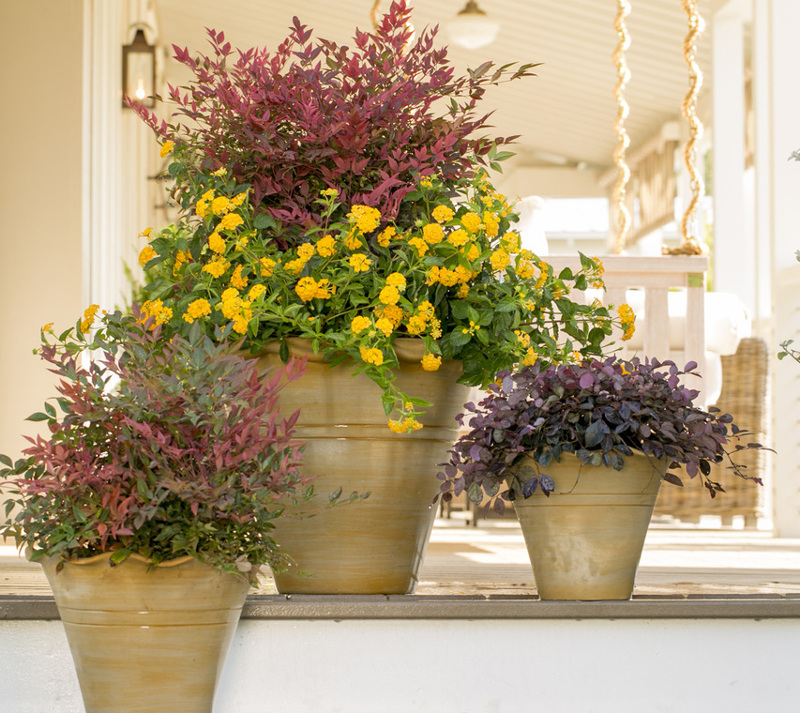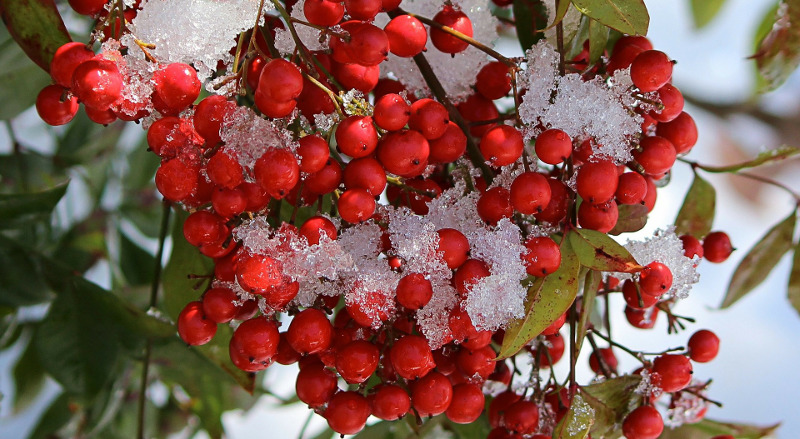Nandina are gorgeous shrubs with so much to offer, they would be wonderful additions to a container garden. But how well do Nandina grow in pots? The happy answer is, fabulously!

Planting Nandina in Pots
Find a spot in full sun or light shade for the ideal growth for your Nandina. When can you plant your Nandina? Nandina can be planted in pots at any time if you are working with container stock (already in a nursery pot).
You’ll want to select a container that can allow for up to three years of growth compared to your plant’s current size, possibly five inches wider than the root ball. However, Nandina require very good drainage, so it’s imperative that your container has plenty of drainage holes. Terracotta or other porous materials will promote drainage, but are not as protective in winter, so keep your hardiness zone in mind.
Best Soil for Nandina in Pots
Since Nandina shrubs love living in moist and well-drained soil, the medium you choose is important. A fertile potting soil high in organic matter with a loamy texture is best. You can add pumice or perlite at a 10 -20% ratio, well-blended, to your mix to increase the drainage.
If you can find a potting mix labeled acidic that would be ideal for your Nandina, since most potting mixes tend to range alkaline to neutral, and Nandina prefer slightly alkaline to slightly acidic.
Avoid soil mixes with “moisture-retaining” crystals, however, which can hold too much moisture and create water tables or drown the roots. A good way to retain moisture for your potted Nandina is to mulch the surface with natural bark chips or moss.
Caring For Nandina in Planters
Potted nandina will prefer a location in sun to partial shade, even moisture, especially in the first two years, and some fertilizer.
Watering Nandina in Pots
As young plants become established, they will need to be watered consistently so as not to let the feeder roots become dry beyond repair. A mulch of bark will help stall evaporation on the surface. Test the moisture – once the soil feels dry to an inch or two, water thoroughly until water runs out of the pot. Deep infrequent waterings are healthier than regular sprinkles. This could be several times a week in hot or dry weather, especially for small containers. Mature plants are fairly drought-tolerant, but will still require watering in times of heat stress.
Fertilizing Nandina in Pots
You may wish to fertilize with an acidic slow-release fertilizer if you are using standard potting mix, which is usually neutral or alkaline. If you are confident the soil is acidic, you can use an all-purpose shrub fertilizer. An ideal ratio is 3-1-2 of N-P-K.
Follow up monthly until August with a liquid fertilizer. Stop by the end of August to discourage tender growth before a frost.
Winter Care for Nandina in Pots
Being hardy in U.S.D.A. zones 6-9, Nandina are hardy in many areas of the U.S. If you are growing near the colder borders of that range, your potted plant may need some extra protection to avoid the container cracking or roots freezing to survive the winter. To winterize your pot in that case, consider putting your pot against a sunny wall, under the eaves away from snow. If a freeze or colder temperatures are expected, water well leading up to it to protect those roots. Pots can be wrapped with permeable burlap or frost cloth fabric to add a layer of insulation, and/or huddled next to straw bales or other plants.

In very rainy or wet climates, mulching with pebbles or fern boughs can help repel excess moisture to avoid drowning your Nandina.
Can Nandina Be Grown Indoors?
Your Nandina is best kept outside. Nandina will not thrive indoors, because their internal cellular clocks are expecting cooler winter and night temperatures and a certain level of humidity that is difficult to provide inside.
 |
Author Erica Browne Grivas - Published 11-15-2021 |
